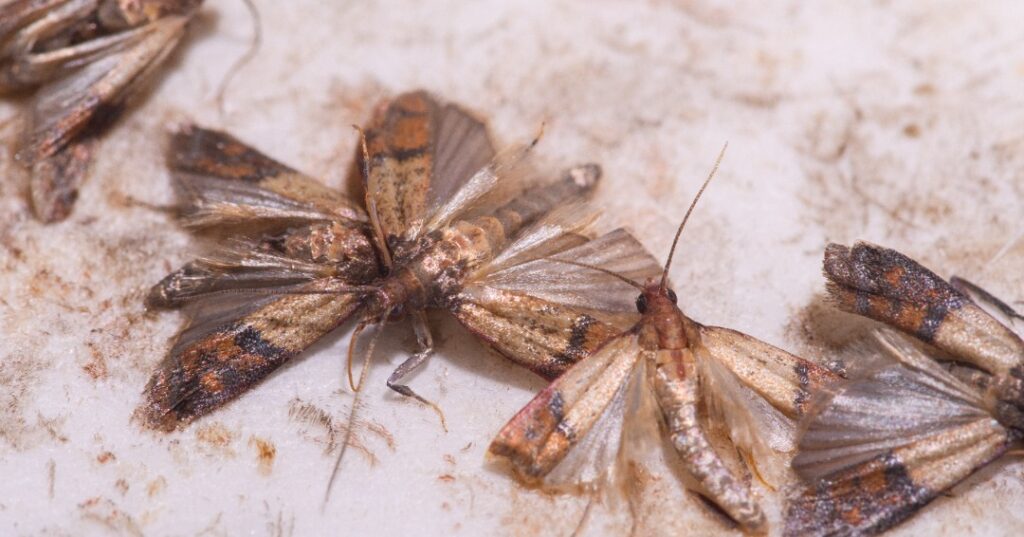Unbeknownst to many homeowners, the stored food products in their pantry or kitchen cabinets, such as grain products, dried fruits, seeds, spices, and even your pet’s food, may be home to Indianmeal moths, which you may have transported home, via the packaging, from the grocery store itself, or by way of the food processing plant, warehouse, or food storage facility where they obtained their products.
What is an Indianmeal Moth?

The Indianmeal moth is a small 1/2-long moth with reddish-brown, gray, and copper-colored markings on the body and 5/8-inch wings that hang over the body, which may be spotted fluttering around the lights in your home. However, it is their larvae that infest food products and cause problems.
After mating, the female Indianmeal moth typically deposits her eggs somewhere on the food product, which will later develop into larvae that bite their way into the food product and cause an infestation.
Indianmeal moth eggs are small grayish-white ovum that range from 0.3 to 0.5 mm in size. The eggs may be deposited singly or in clusters of up to 400 eggs or more that will usually hatch within a week.
Once the eggs develop into larvae, they will vary in color from off white to pink to greenish or brownish. The larvae themselves are about 1/2-inch long with five sets of abdominal limbs that they use to get around and invade nearby food products.
Once the larvae become pupae, they can be observed in a silk-like cocoon, or their 1/4 to 2/5-inch long pale brown bodies may be observed unwrapped. The pupal stage typically lasts anywhere from 6 weeks to 20 days, depending on the temperature, after which time the pupae will emerge as full-grown adults ready to reproduce.
What Damage Do Indianmeal Moths Cause?
Adult Indianmeal moths do not typically cause damage; however, as their larvae feed on the top layer of food products, they accumulate their share of waste-filled cocoons, empty exoskeletons, and eggshells that make the food product unusable.
Treating Indianmeal Moths
One of the most common ways that Indianmeal moths enter the home is via food packages obtained from the supermarket that are then brought home and stored in the cabinet or pantry. Therefore, it is important to carefully inspect pantry products for signs of Indianmeal moth eggs and larvae, including silk-like cocoons and grayish colored eggshells, which can signal an infestation.
Any jars should also be inspected to ensure they are tightly sealed, which helps prevent the larvae from entering the product where they can thrive. In fact, it is recommended that pantry foods be stored in sealed, airtight containers, including pet food, birdseed, and dog food, to help prevent an Indianmeal moth infestation. It is also recommended during the hotter months to store pantry foods, including flours, in the refrigerator until you are ready to use them.
If an infestation is discovered in any of your food products, then be sure to discard them right away. You could also contact a pest control service for assistance. Our technician may use specially formulated insect traps to attract Indianmeal moths, which can trap a large number of moths at a time to help decrease the infestation. Or, professional insecticides can also be used to help manage Indianmeal moth populations.

